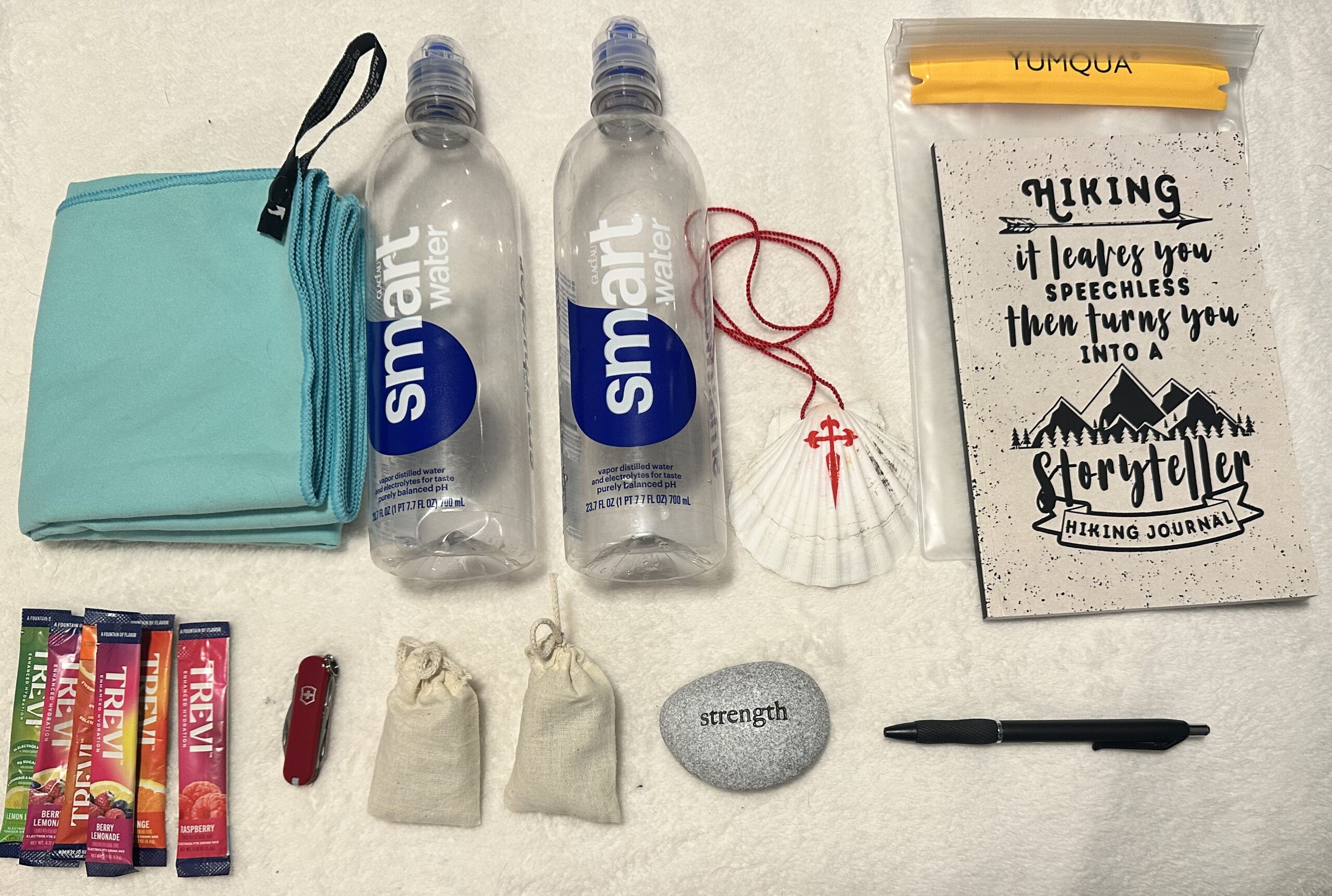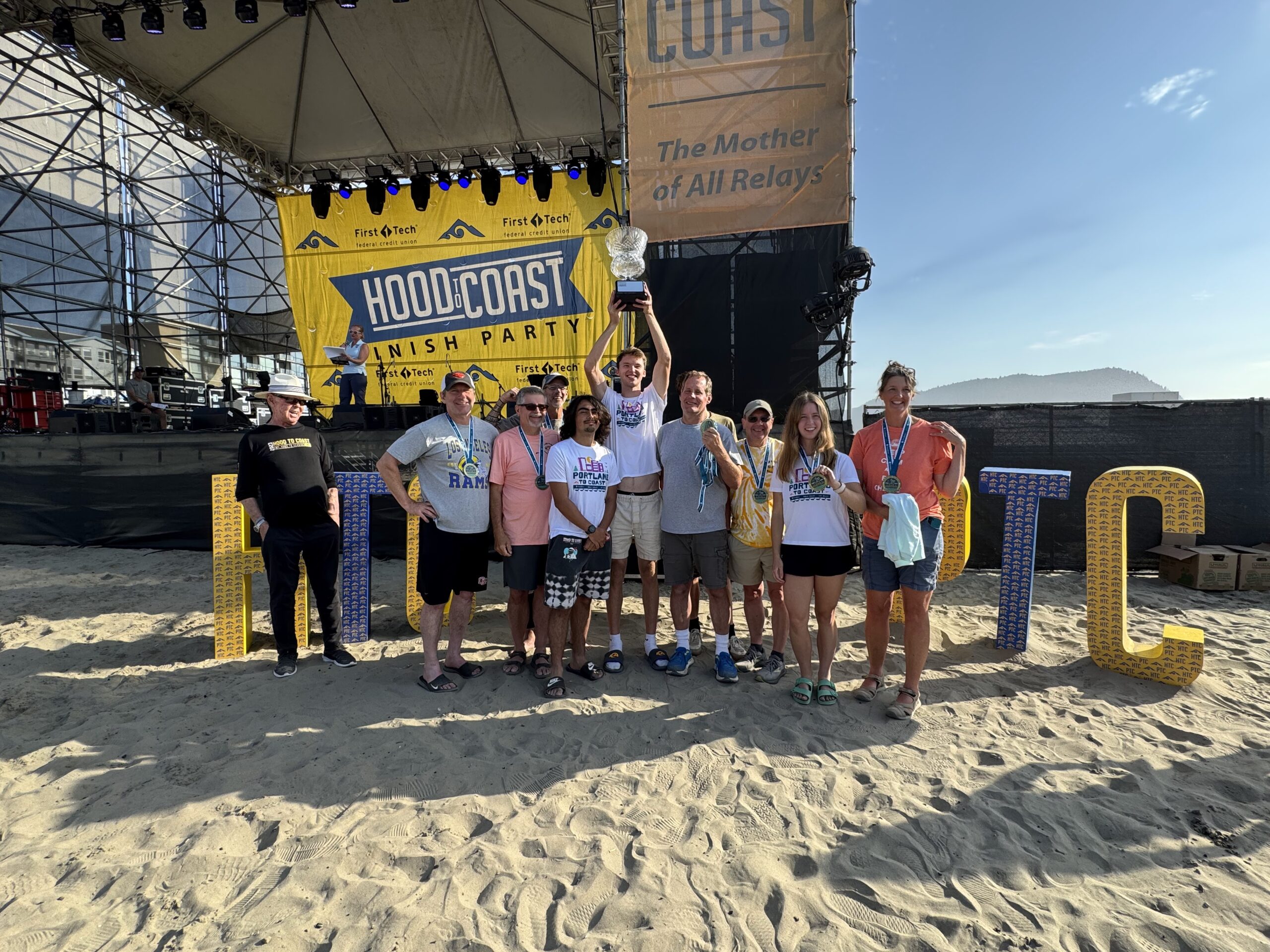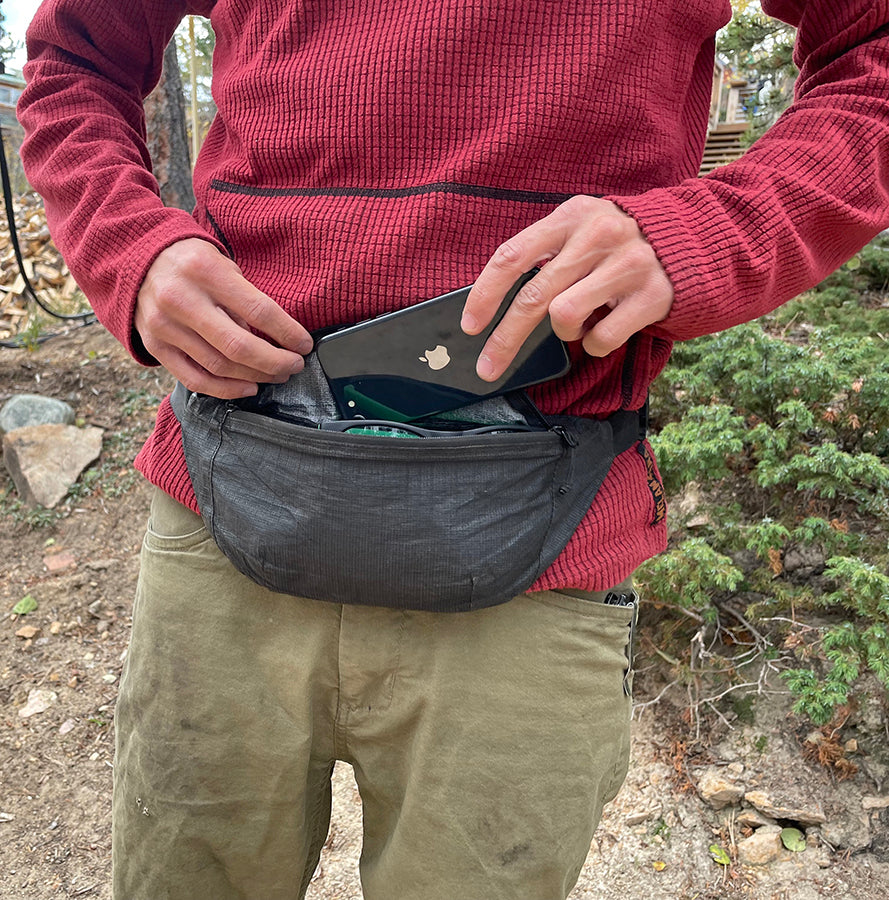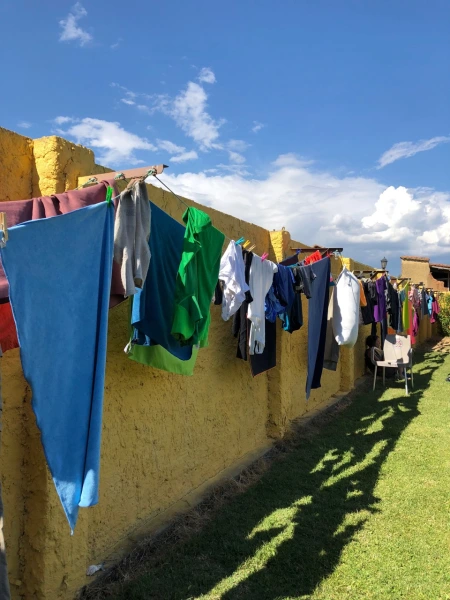I’ve tried to categorize and organize my packing list entries, but I’m at the bottom of the list with a few that either didn’t fit with other categories or were recent additions. So to round out my packing list, I have the following items:

Journal, pen and waterproof pouch – While I intend to post daily updates to my blog, I wanted to keep a written journal as well. I found this Hiking Journal on Amazon and liked its size, weight and how each hike is provided with one page of standard prompts (to/from; distance; weather; hiking companions; etc.) and a blank page for general notes. At 102 pages, it gives me space for 50 days of hiking entries. As I want to keep my records from being damaged by rain, I will also have a waterproof pouch (the medium size of the 3-pouch set I also will use for my passport) and a pen. Collectively, these weigh in at 204 grams (7.2 ounces).
Water bottles – Taking advice from a variety of people, I’m going to travel with two empty Smart Water bottles. These are made of a much sturdier material than many single-use bottles and include a flip top cap which lets you use then to squirt water. They weigh about an ounce each (30 grams). I don’t expect to need two full bottles of water most of the time, but for 30 grams, I’ll carry an extra bottle. And since they are essentially disposable bottles, if they start getting gross, I can dispose of them and purchase new ones along the trail.
Sachets – My hiking friend, Barbara – who is left yesterday with her husband Richard on their third Camino – gave me these two sachets filled with lavender, eucalyptus and other dried fragrant flowers to deter bedbugs from hitching a ride on my pack. I’m happy to add these 20 grams of weight if it will help keep the nasty critters at bay.

Mini Swiss army knife – I was debating about whether to pack a knife before I left or to purchase one once in Portugal. Having just received this little guy as a birthday gift (thanks Mom & Dad), the decision was made for me. Weighing just 30 grams, the Victorinox Ramble Swiss Army Knife has a 2″ knife blade – small enough to pass through TSA, but large enough to cut sliced of cheese – scissors, a file, bottle opener and a tooth pick. I envision all five of its features will be utilized during my trip.
Microfiber towel – I packed my towel with my daily clothes, but didn’t mention it in that post. This quick dry towel weighs in at 163 grams (5.75 oz). Its large enough to wrap around my waste and just have enough to tuck in. I’ve test used it and am please both with how well it dries my body and quickly dries.
Electrolyte powder – I struggled to find an electrolyte powder that didn’t taste horrible and had the necessary elements I wanted in a hydration supplement. I found what I was looking for in Trevi Sugar Free Electrolytes. The pouches weigh less than 6 grams each and I’ve found all the flavors pleasing. While I’m sure I’ll be able find suitable products along the trail, I will travel with a handful of these for both the first few days and for emergencies.

Traditional pilgrimage items: Rock & Seashell – Both the rock and the shell have symbolic significance on the Camino. The rock can represent a burden you are hoping to let go of by embarking on the Camino. Others carry a stone as a remembrance. Stones are left along the trail on mileposts, cairns, and on the Camino Frances, at the Cruz de Ferro. I am carrying a stone inscribed with the word strength. This was given to my deceased wife, Shirley, as she struggled with her medical issues. It seemed an appropriate way to honor her. The anniversary of her death will be near the end of my journey and I intend to leave the stone behind on that day.

The scallop shell with the red cross of St. James is the emblem that many pilgrims carry hanging from the back of their pack. The most widely recognized explanation for the shell is that early pilgrims used them as both a drinking vessel – scooping water from streams – and as an eating utensil when they reached their alberges.





